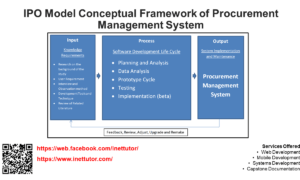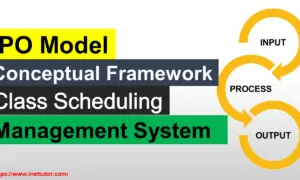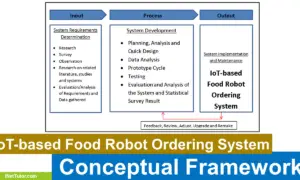Canteen Sales and Credit Management System ER Diagram
This article will discuss the step by step process on how to prepare the entity relationship diagram or ERD of the project entitled Canteen Sales and Credit Management System.
The project entitled Canteen Sales and Credit Management System is a network based information system that manages the transactions of a canteen such as the sales, inventory, employee and customer ledger.
The first step in the development of the Canteen Sales and Credit Management System is to prepare the ER diagram that will serve as the basis later on in the creation of the actual database.
We will create and explain the process of making the entity relationship diagram of Canteen Sales and Credit Management System.
Let’s start from the symbols used in the ER Diagram.
Entity is represented by the rectangle shape. The entity will be our database table of Canteen Sales and Credit Management System later on.
Attribute is represented by the oval shape. This will be the columns or fields of each table in the Canteen Sales and Credit Management System.
Relationship is represented by diamond shape. This will determine the relationships among entities. This is usually in a form of primary key to foreign key connection.
We will follow the 3 basic rules in creating the ER Diagram.
- Identify all the entities.
- Identify the relationship between entities and
- Add meaningful attributes to our entities.
Step 1. In the Canteen Sales and Credit Management System we have the following entities
- User
- Privileges
- Adjustment
- Sales
- Product
- Category
- Measurement
- Stock In
- Payment
- Supplier
- Ledger
- Employee
- Department
- Credit
Our design of Canteen Sales and Credit Management System consists of 14 entities; the specified entities will be our database tables in the design and implementation of Business Permit database schema.
We will now draw the entities of the Canteen Sales and Credit Management System specified above and it will be represented by a rectangle shape. The image below is the entities identified in the scope of the Canteen Sales and Credit Management System.
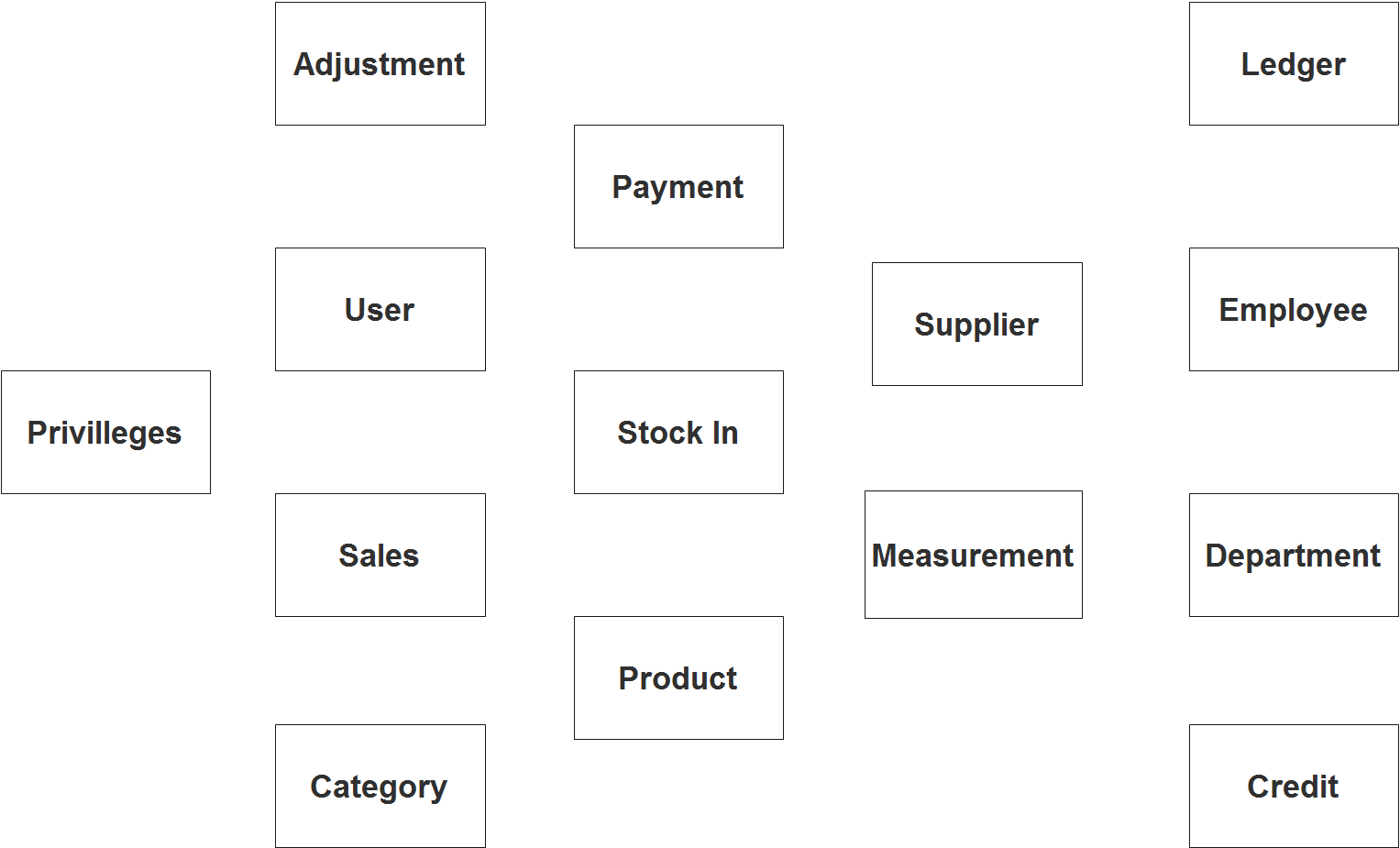
Step 2. After we have specified our entities, it is time now to connect or establish a relationship among the entities.
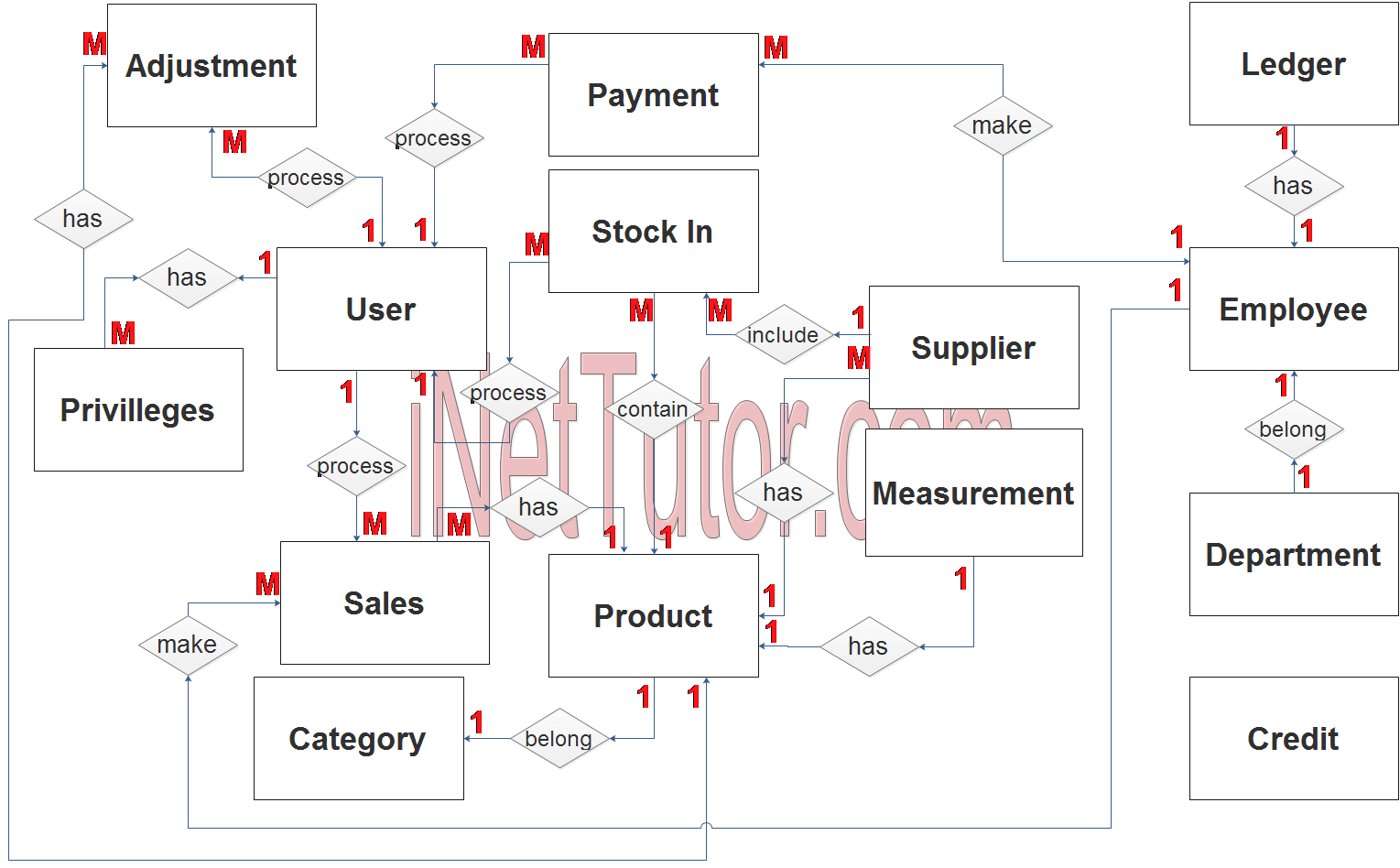
- The user has multiple system privileges, this refers to what the user can access (1 to many relationship).
- The user processes adjustments, this refers to the products quantity adjusted (1 to many relationship).
- The user processes and encodes the delivery of products (stock-in of products) (1 to many relationship).
- The stock-in information includes multiple products (1 to many relationship).
- The supplier information is included in the delivery of items (stock-in) (1 to many relationship).
- The user processes the sales record of the business (1 to many relationship).
- The user processes the payment of customers/employees (1 to many relationship).
- A product belongs to a specific category (1 to 1 relationship).
- The product has unit of measurement (1 to 1 relationship).
- The products are included in the sales record (1 to many relationship).
- The product is ordered from a supplier (1 to many relationship).
- The employee buys or loans (credits) a product which is recorded in the sales (1 to many relationship).
- The system records the employee’s ledger and other transactions (1 to 1 relationship).
- The employee belongs to a department (1 to 1 relationship).
- The user of the system is in charge of updating the credit information (it was not included in the ER Diagram).
Step 3. The last part of the ERD process is to add attributes to our entities.
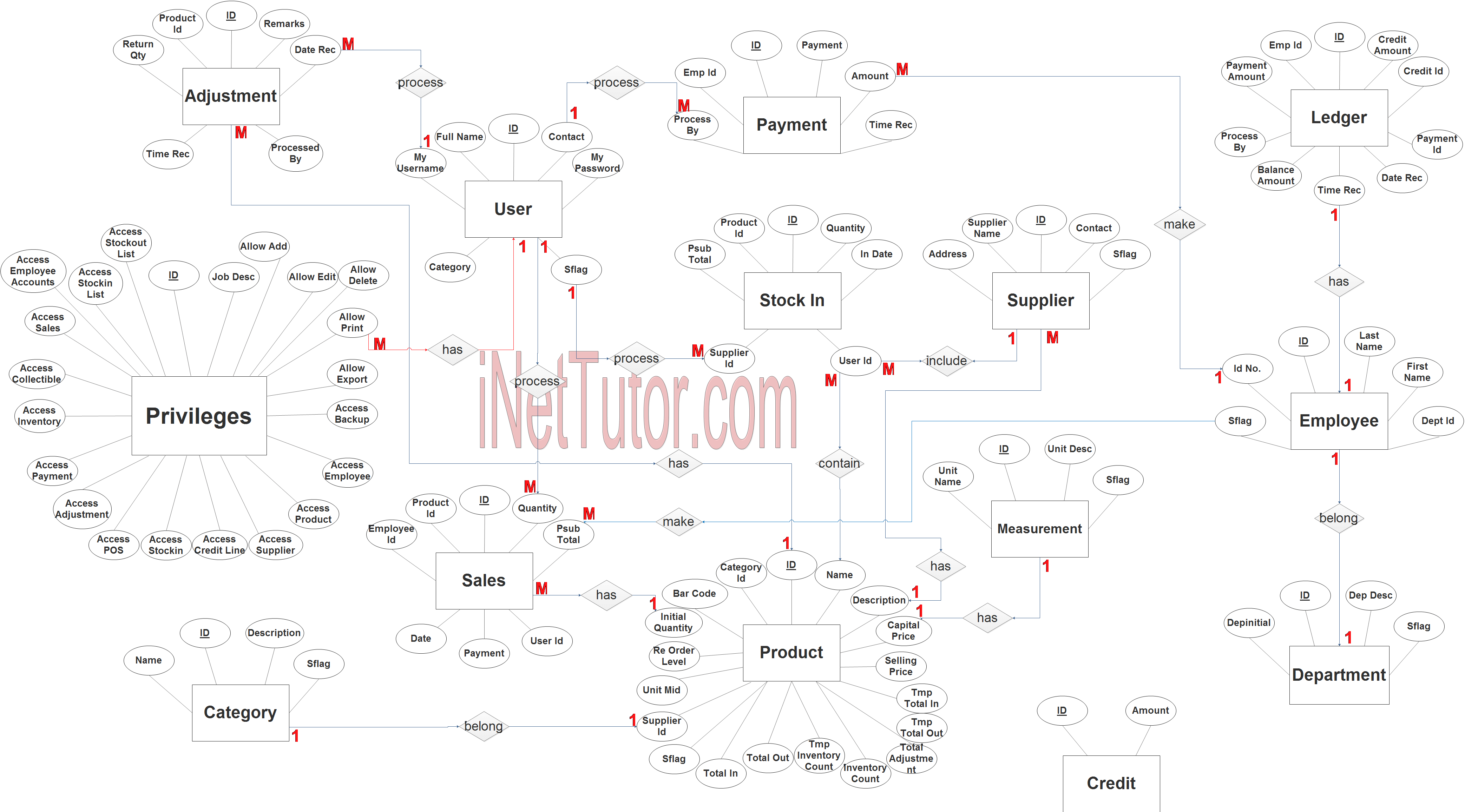
User Entity has the following attributes:
- ID – primary key represented with underline
- Full name
- My Username
- My Password
- Contact
- Category – foreign key
- Sflag
Privileges Entity has the following attributes:
- ID – primary key represented with underline
- Job Desc
- Allow Add
- Allow Edit
- Allow Delete
- Allow Print
- Allow Export
- Access Backup
- Access Employee
- Access Product
- Access Employee
- Access Product
- Access Supplier
- Access Credit Line
- Access Stockin
- Access Adjustment
- Access Payment
- Access Inventory
- Access Collectible
- Access Sales
- Access Employee Accounts
- Access Stockin List
- Access Stockout List
Adjustment Entity has the following attributes:
- ID – primary key represented with underline
- Product ID – foreign key
- Return Qty
- Remarks
- Date Rec
- Time Rec
- Processed By – foreign key
Sales Entity has the following attributes:
- ID – primary key represented with underline
- Product ID – foreign key
- Employee ID – foreign key
- Quantity
- Psub Total
- Date
- Payment
- User Id – foreign key
Product Entity has the following attributes:
- ID – primary key represented with underline
- Category ID – foreign key
- Name
- Description
- Barcode
- Initial Quantity
- Re Order Level
- Capital Price
- Selling Price
- Unit ID – foreign key
- Supplier Id – foreign key
- Sflag
- Total In
- Total Out
- Tmp Inventory Count
- Inventory Count
- Total Adjustment
- Tmp Total Out
- Tmp Total In
Category Entity has the following attributes:
- ID – primary key represented with underline
- Name
- Description
- Sflag
Measurement Entity has the following attributes:
- ID – primary key represented with underline
- Unit Name
- Unit Desc
- Sflag
Stock In Entity has the following attributes:
- ID – primary key represented with underline
- Product ID – foreign key
- Quantity
- In Date
- Psub Total
- Supplier ID – foreign key
- User ID – foreign key
Payment Entity has the following attributes:
- ID – primary key represented with underline
- Emp Id – foreign key
- Payment
- Amount
- Time Rec
- Process By – – foreign key
Supplier Entity has the following attributes:
- ID – primary key represented with underline
- Supplier Name
- Address
- Contact
- Sflag
Ledger Entity has the following attributes:
- ID – primary key represented with underline
- Emp Id – foreign key
- Credit Amount
- Credit Id – foreign key
- Payment Amount
- Payment Id – foreign key
- Balance Amount
- Time Rec
- Date Rec
- Process By – foreign key
Employee Entity has the following attributes:
- ID – primary key represented with underline
- Id No
- Last name
- First name
- Dept Id – foreign key
- Sflag
Department Entity has the following attributes:
- ID – primary key represented with underline
- Dept Initial
- Dep Desc
- Sflag
Credit Entity has the following attributes:
- ID – primary key represented with underline
- Amount
Note: all attributes with underline represents the primary key of the entity or table.
The next step is to convert the plan designed on ER Diagram into the actual database, please search for the Canteen Sales and Credit Management System article which was already posted.
Contact us on our facebook page for the softcopy of the Canteen Sales and Credit Management System.
You may visit our facebook page for more information, inquiries and comments.
Hire our team to do the project.
